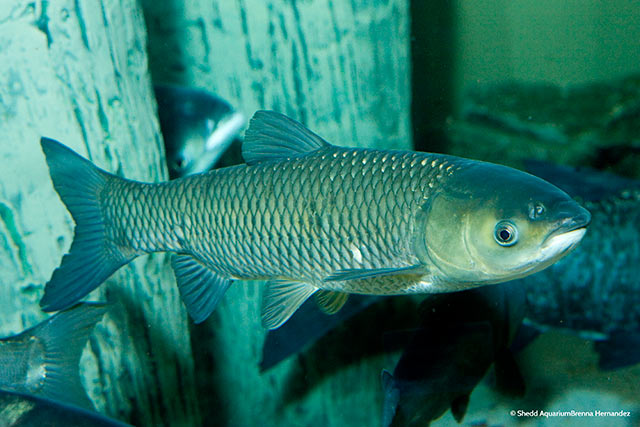Grass Carp
Ctenopharyngodon idella
One of four carp species collectively referred to as Asian carp and native to Southeast Asia, the grass carp has large cycloid scales on the back and sides outlined by pigment giving it a cross-hatched appearance. The grass carp has an oblong body, slightly flattened head and can be black to olive-brown in colour with brassy or silvery-white sides. Consuming approximately 40% of their body weight each day over their 10 year lifespan, grass carp reach a maximum size of 1.5 m in length and can weigh up to 45 kg.
Conservation Status: IUCN

Distribution
Eastern Asia from southern Russia to northern Vietnam
Habitat
Slow flowing waters of large rivers and lakes
Diet
Aquatic plants, detritus, insects, small fish, earthworms and invertebrates
Reproduction
Grass carp usually spawn in summer when flow in rivers is high. Eggs are carried downstream by the river current and young grass carp develop in quiet backwaters and meanders of the main river channels. Young grass carp feed on insect larvae and crustaceans but soon switch to a diet of aquatic plants.
Adaptation
Grass carp are able to tolerate a broad temperature range between 0 and 38oC. Pharyngeal teeth in the throat allow the grass carp to break down and consume tough aquatic plants and small invertebrates.
Threats to Survival
Like other Asian carp species, grass carp is threatened by overfishing, pollution and river modifications such as dams, flood control devices and land reclamation for agriculture.














